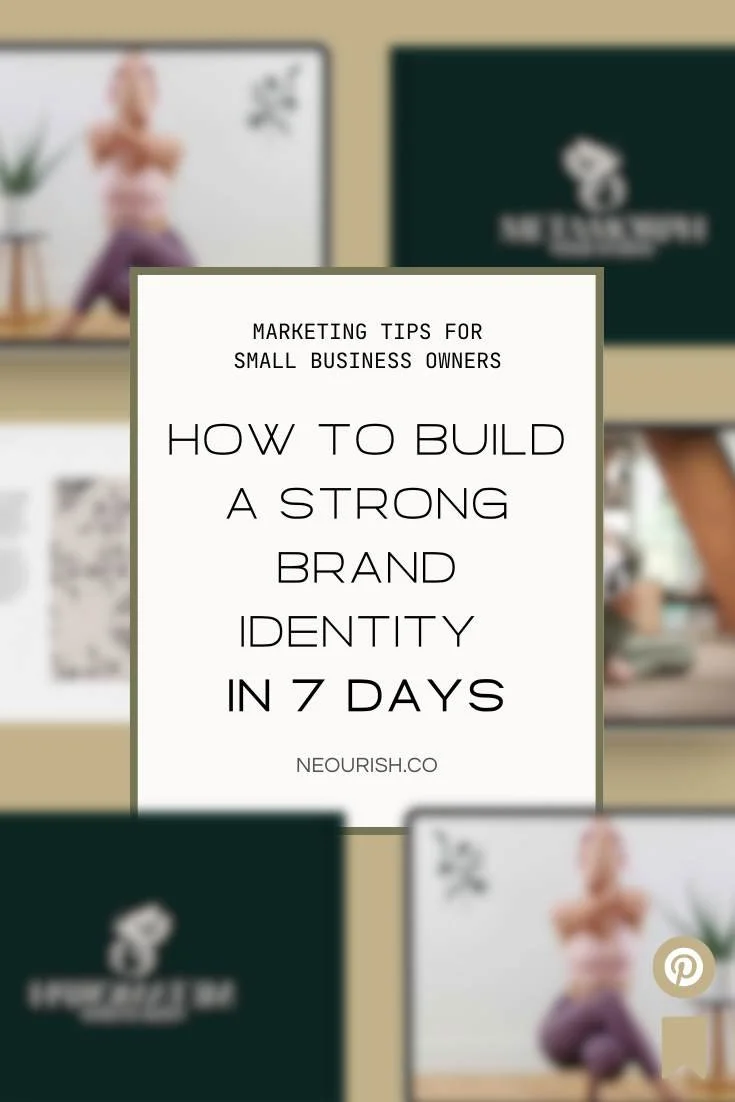How to Build a Strong Brand Identity in 7 Days
Build a BrandHow to Build a Strong Brand Identity in 7 Days
Building a strong brand identity is essential for small business success. It’s what sets you apart from competitors, creates trust with your audience, and ensures long-term growth. While crafting a brand identity might seem like a daunting task, you can lay a solid foundation in just seven days by following this step-by-step guide. This guide focuses on the wellness brand developed for METAMORPH YOGA STUDIO. To view the complete brand concept, please check our portfolio or click here.
Day 1: Define Your Brand’s Core Values and Mission
Your brand identity starts with clarity. Ask yourself: What does your business stand for? What problem are you solving, and for whom?
Core Values: Choose 3-5 principles that guide your business decisions.
Mission Statement: Write a concise statement about your purpose and the value you provide.
Example: “We provide eco-friendly packaging solutions to help small businesses reduce their carbon footprint without compromising on quality.”
Day 2: Understand Your Target Audience
Your brand identity should resonate with your ideal customer. Spend time identifying their:
Demographics: Age, location, income level, etc.
Psychographics: Interests, values, lifestyle choices, and personality traits. Understanding these aspects will help you craft a brand identity that not only attracts but also engages your target audience on a deeper level.
Pain Points: Challenges they face and how your business solves them.
Preferences: What aesthetics, values, and messaging resonate with them?
Pro Tip: Use tools like Google Analytics or customer surveys to gather insights on your target demographic.
Day 3: Create Your Visual Identity
This is the fun part! Your visual identity includes the tangible elements that represent your brand.
Logo: Design a logo that is simple, memorable, and versatile. Also design variations of the logo that can be used in different parts of the brand. Consider creating a primary logo that encapsulates the essence of the brand, accompanied by a secondary logo and favicon that can be utilized in tighter spaces, such as social media profile pictures or app icons.
Color Palette: Choose 3-5 colors that evoke the emotions you want your brand to convey.
Typography: Select 1-2 primary fonts for headings and body text.
Imagery and Patterns: Decide on the style of photos, illustrations, or textures to use consistently.
Example: A wellness brand might use calming greens and blues, paired with clean, modern typography and nature-inspired imagery.
Below is an example of our branding (primary, secondary, brand pattern and favicon) work for the wellness brand METAMORPH YOGA STUDIO.
Day 4: Define Your Brand Voice and Messaging
Your brand’s voice defines your communication style with your audience. Is it professional, friendly, or bold? Consistency is crucial, as this voice can influence and help to shape your logo’s design.
Tone: Decide on a tone that aligns with your audience’s expectations.
Key Messaging: Write down 3-5 core messages you want to convey across all platforms.
Example Messaging for a Yoga Studio can be: “Step away from the daily chaos and into a journey of self-discovery and empowerment”
What is the tone and key messaging that you want your business to convey to your potential clients?
“Step away from the daily chaos and into a journey of self-discovery and empowerment” - METAMORTH YOGA STUDIO
Day 5: Build Your Online Presence
Your website and social media are often the first points of contact for potential customers. Ensure they reflect your brand identity.
Website: Use your visual identity and messaging to create a cohesive look and feel.
Social Media: Update your profiles with consistent branding elements like logos, banners, and bios.
Content Plan: Outline the types of posts (educational, promotional, behind-the-scenes) that align with your brand.
Day 6: Create a Brand Style Guide
A brand style guide ensures consistency across all touchpoints, whether you’re creating social posts, packaging, or email campaigns.
Include: Logo usage, color codes, typography guidelines, and tone of voice.
Share: Provide this guide to your team or partners in order to maintain consistency across all touchpoints.
Pro Tip: If your not an expert in professional design tools, such as Adobe Illustration, you can use tools like Canva or Notion to create a digital style guide that’s easy to update and share.
Create a Brand Style Guide that can be utilized across various platforms and mediums, ensuring a cohesive and recognizable brand identity. A well-crafted Brand Style Guide serves as a blueprint for all brand communications, fostering consistency and clarity in messaging.
Day 7: Review and Refine
Spend the final day reviewing your work. Ask for feedback from trusted colleagues or mentors and make adjustments as needed.
Test Your Branding: Launch a small campaign or post to see how your audience responds.
Debrief: Evaluate the effectiveness of your efforts. Debriefing is a crucial step in the branding process as it allows you to reflect on your actions, gather insights, and identify areas for improvement.
Set Goals: Through this you can establish measurable objectives to track the effectiveness of your new brand identity.
Building a brand identity doesn’t have to take months. By dedicating just seven focused days, you can create a solid foundation that resonates with your audience, builds trust, and sets your business up for success.
Interested in learning more about effective branding and marketing strategies? We encourage you to check out these useful resources that can provide valuable insights, or feel free to contact us if you would like to get started on developing a strong branding and marketing plan for your small business.
External Links:
Ready to take your branding to the next level? Explore our branding services to get professional guidance tailored to your business needs.












